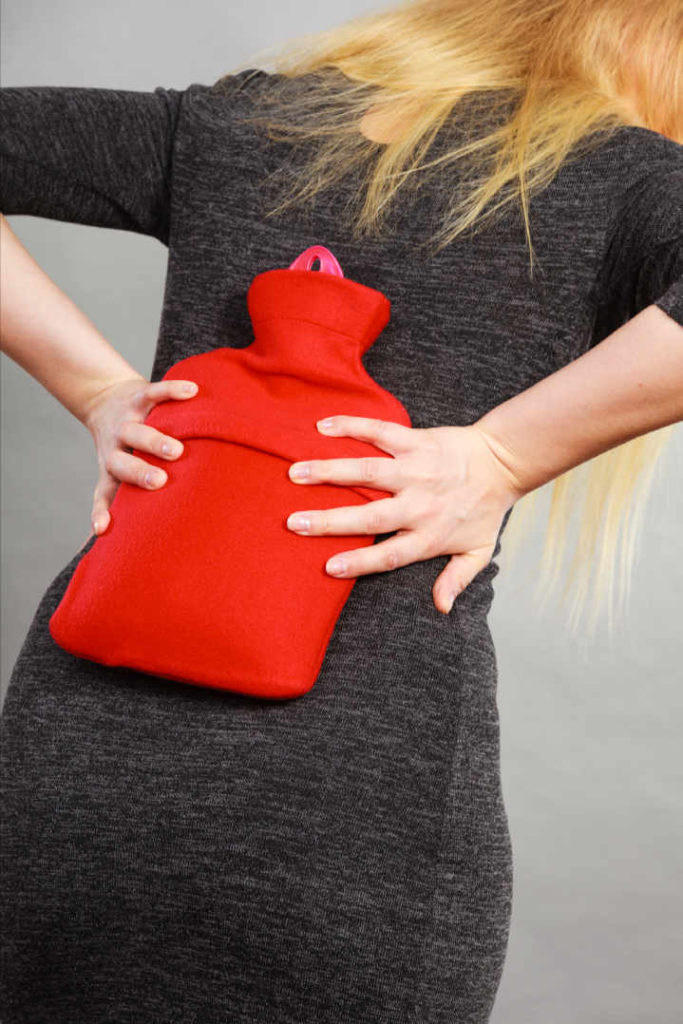Table of Contents
When you have lower back pain, using either hot or cold therapy options can be a great help.
While these may not be the primary therapy depending on the severity of your issue, ice or heat for lower back pain can almost always be at least some help and relieve a little bit of stress or stiffness in your lower back.
Even better, these treatments are often pretty simple and inexpensive to apply to your lower back pain problem.
Let’s go over which one you should use and when depending on your condition or preferences.
When Are Hot/Cold Therapies Good for Lower Back Pain?
Of course, hot and cold therapy is only helpful during certain lower back pain cases.
In general, lower back pain from common conditions like spinal stenosis (which is the narrowing of your spine’s bony canals and associated nerve compression), herniated discs, or even sciatica can benefit from hot or cold therapies.
These therapies can also be helpful if you have a direct injury on your lower back, like a sports injury or something from a fall.
If you pull your back muscles and those are causing your lower back pain, then hot or cold therapy might also be for you.
This pain is usually because you overstretch your muscle fibers, and are commonly associated with people who lift weights improperly or too much weight.
As a result, any exercise-induced muscle soreness can also benefit from hot or cold therapies.

How to Use Hot or Cold Therapies
In general, hot and cold therapies should be used intermittently, or one after the other instead of in conjunction (which would make only a lukewarm temperature anyway).
Whether you use a patch or something with water, you should only use either a hot or cold therapy option for 15 to 20 minutes and allow for a two-hour break in between.
This prevents you from accidentally damaging your skin or nerves.
While you may have a personal preference for ice or heat for lower back pain, some are clearly better for some scenarios than others.
If You Have Acute Back Pain
A good rule of thumb is that cold therapy should be used first. Heat therapy can be applied afterward, particularly when your back pain is acute.
For acute back pain, lowering your body temperature helps to constrict the blood vessels and cause a helpful numbing effect.
Using heat therapy second, allows your soft tissues to become more flexible and stimulate blood circulation.
This helps your tissues regenerate more quickly and can even help your back function better overall.
Basically, this one-two punch gets rid of inflammation and helps relax your muscles over time.
If You Have Chronic Back Pain
If you have chronic or subacute back pain, on the other hand, it’s a good idea to use heat therapy first.
Combine your heat source with a medium that allows the heat to disperse consistently, like a blanket or another cloth or a commercial and adhesive wrap.
Either of these solutions protects your skin and muscles from being burned or overheated but prevents the warmth from dissipating too quickly.
After Exercising
If you experience lower back pain right after an exercise routine, cold therapy is the way to go.
If you apply a cold patch or icepack your back immediately after your exercise activity, you can close up your blood vessels and reduce any tissue damage or inflammation.
If the pain is still there 24 hours later, you can then apply some heat therapy and help blood vessels to “widen”.
We recommend that you exercise at least twice a week when you have lower back pain. Swimming is a good choice.
Constant Pain
It’s a good idea to keep a hot patch near your bed and use it first thing when you wake up in the morning to warm up your muscles.
This is an especially good idea if you have a stiff or achy back after it’s been relatively still for several hours.
You can also apply a cold patch before you go to bed every night, especially if you’ve exerted your back.
In this way, you can use cold and hot therapy in conjunction at different times to make the most of their different benefits.
It’s also a smart plan to carry a bunch of self-activating patches or different ice packs in your car or travel bag.
This will allow you to have your hot or cold therapies on hand no matter where you go.
If your car doesn’t have heated seats there are inexpensive options you should use. Like this one.
Making hot and cold therapies a part of your daily routine is a better way to benefit from their advantages and keep your treatment consistent. Plus, it is inexpensive and easy to use.
When Not Use Hot or Cold Therapy
You should never use hot or cold therapy solutions if you have any open wounds or any place where fluid is oozing out of an inflamed region.
You should also avoid it if you have chronic conditions like spinal cord injuries or rheumatoid arthritis.
Remember to speak to your doctor before undertaking any treatment just to be on the safe side.
Conclusion
Hopefully, these hot and cold treatment ideas can help you manage your lower back pain over the long term.
Remember to use ice or heat for lower back pain in combination and at different times for the best results.
